The Meizu MX4 Pro Review
by Andrei Frumusanu on February 16, 2015 2:00 AM EST- Posted in
- Smartphones
- Exynos
- Mobile
- Meizu
GPU Performance
The Exynos 5430's Mali T628MP6 at 600MHz should be a predictable test candidate now that we have scores from Note 4's Exynos 5433 and Huawei's Kirin 920 devices. The MX4 Pro should perform slightly worse than the 5433. Meizu maintains the ALU load percentage based scaling logic that I've covered in the Note 4 Exynos review, meaning that ALU heavy loads allow the GPU to scale up to 600MHz while more traditional loads will limit the GPU to 550MHz.
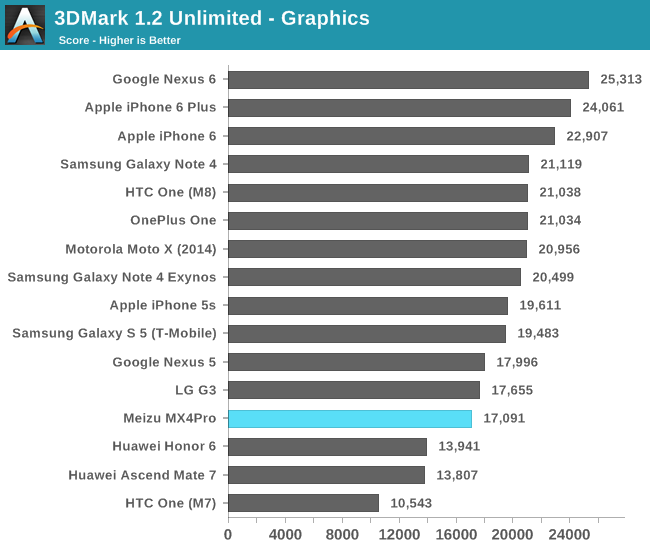
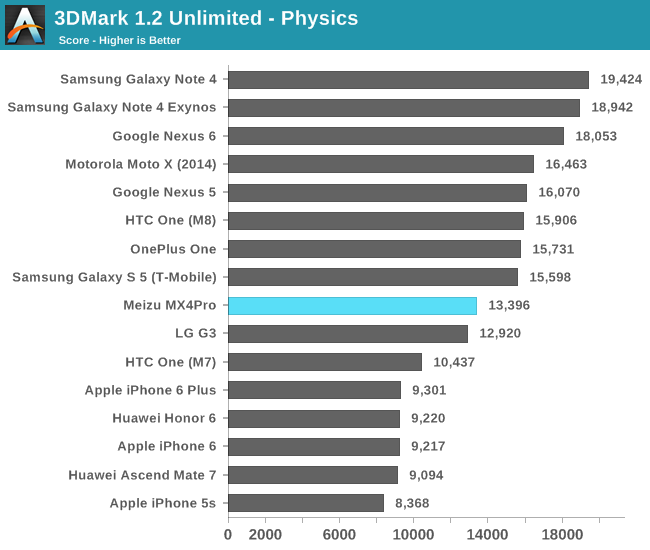
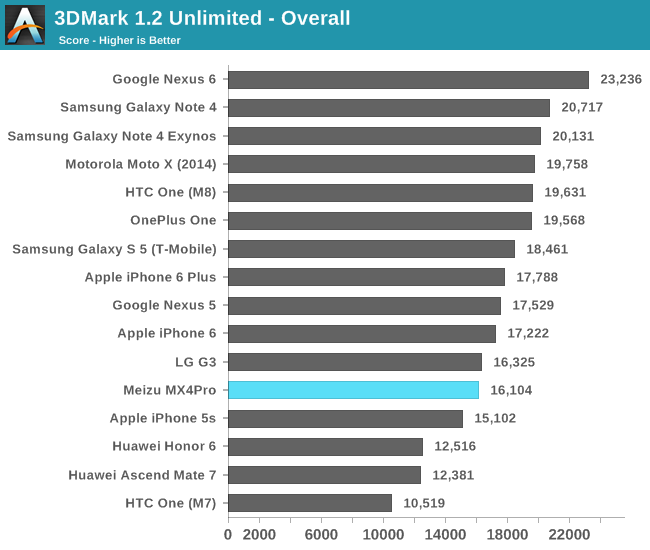
In the 3DMark Unlimited Graphics test we see how the Mali lands more or less where we expected it, worse than the Note 4 and better than the Huawei units. The physics score is still a strongly CPU-bound test and the weaker A7 cores of the 5430 are what is used during most 3D loads.
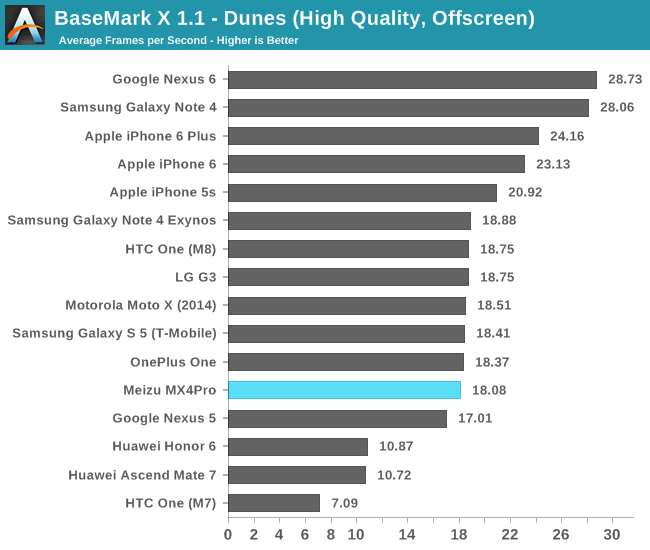
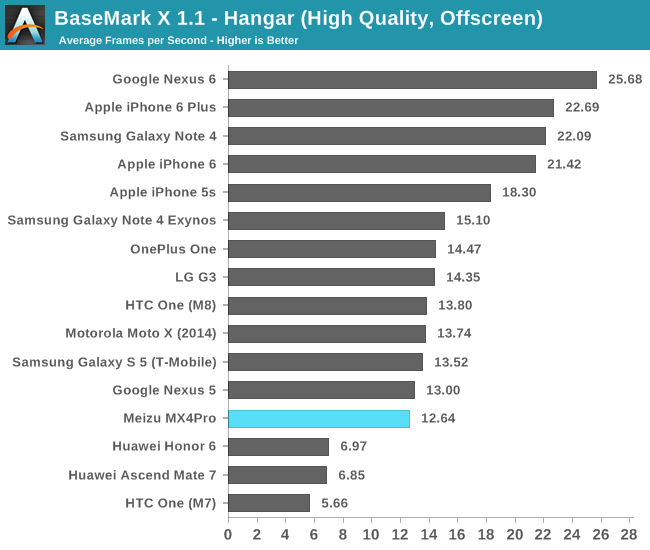
As we move on to BaseMark X, we're getting into more pure 3D loads that are not as affected by CPU speeds. Here we see the Mali T628MP6 outperform the Kirin 920 by much more than what we would expect from 50% more cores on the MP4 configuration. I've mentioned in the Note 4 review that Samsung has dedicated and added a lot of cache in the Mali's in the 543X Exynos SoCs, and this delta might very well be a result of the modified implementation. The MX4 Pro is on the heels of Adreno 330 devices.
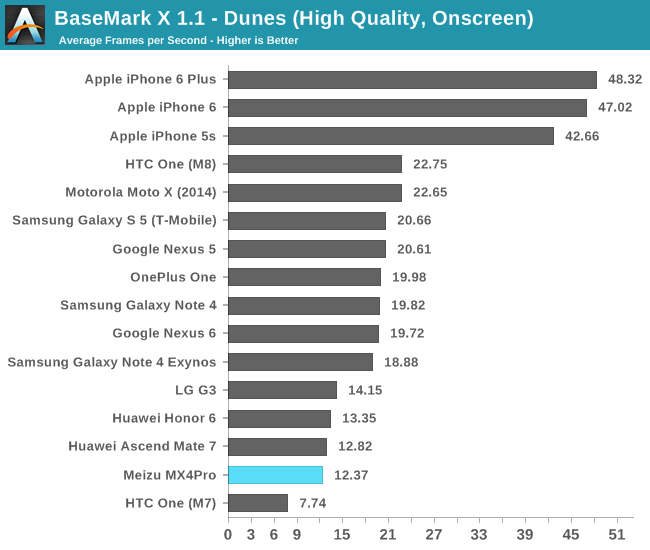
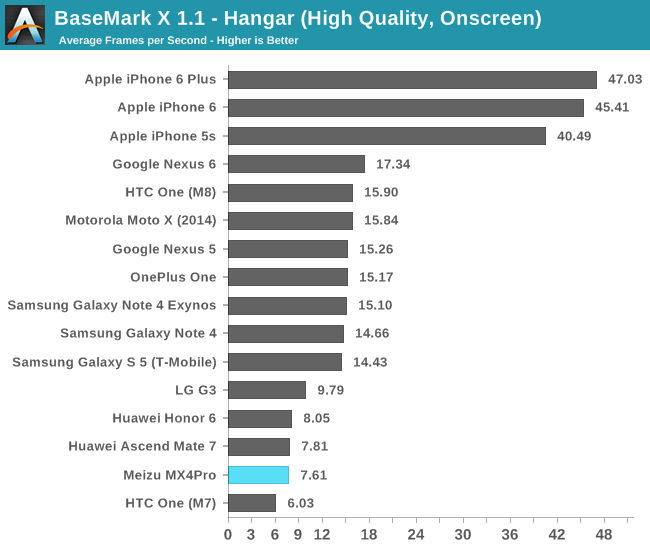
The higher-than-QHD resolution of the MX4 Pro drags down the on-screen scores by a significant amount. There seems to be a bandwidth bottleneck here as the device doesn't manage to outperform the Kirin devices.
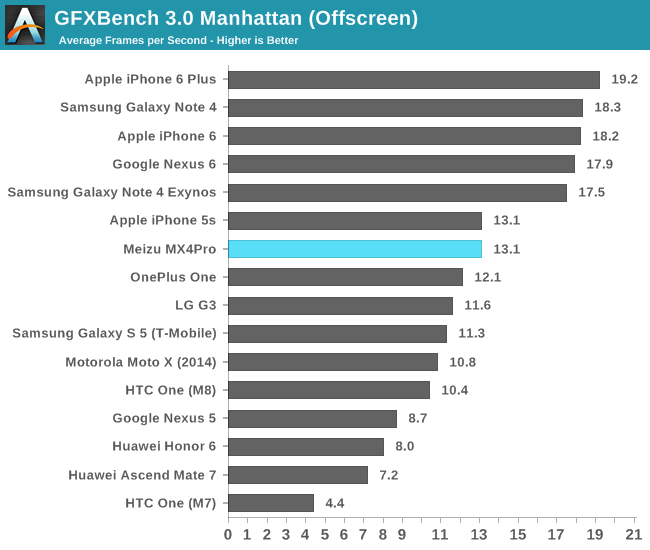
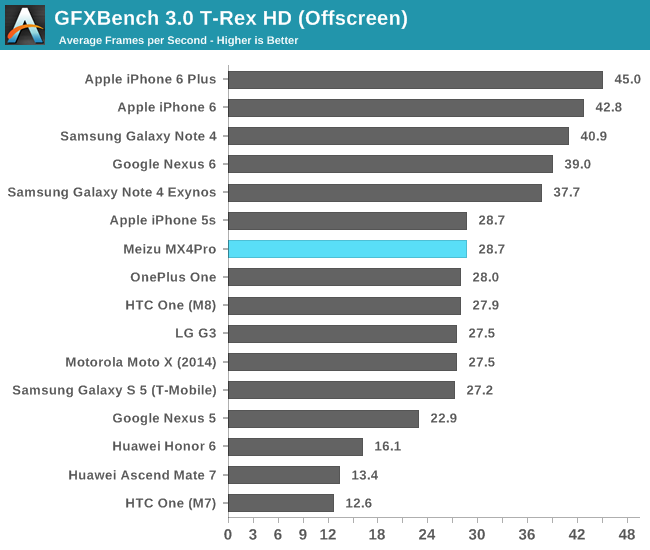
The Manhattan and T-Rex off-screen scores again put the Exynos 5430 at the level of the Adreno 330.
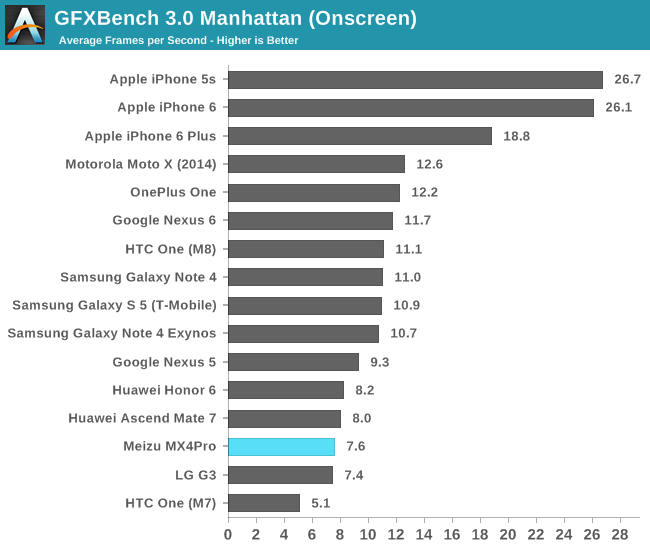
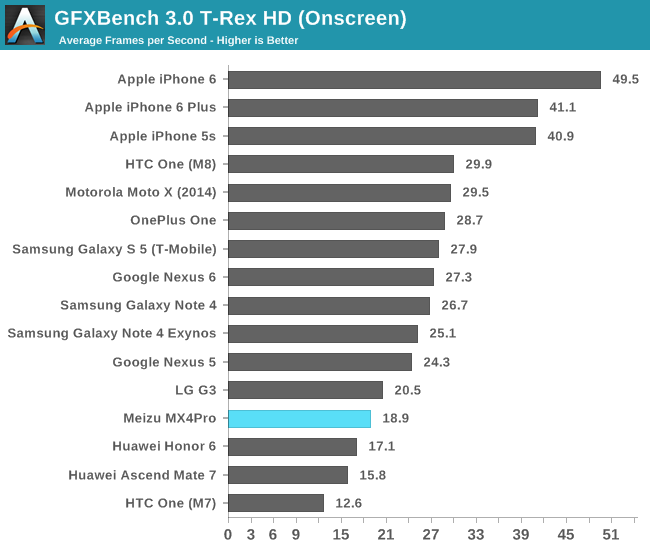
The onscreen scores again reverse the scores and put the Mali at a greater disadvantage. It seems while the Exynos 5430 is able to properly keep up at 1080p resolution, the performance degradation when switching to 1560p is quite large.
GPU Power
The Note 4 review started something that I hope to continue in the future whenever a device allows me to do a full power analysis. The MX4 Pro is luckily one of those devices, and I was able to measure some interesting figures that I'll be getting into more in the battery life section. For now, I present some isolated GPU power figures employing the same methodology that I've used for the Exynos 5433, meaning the system is limited to the little cores and the device's screen power is subtracted from the off-screen tests of GFXBench.
While the MX4 Pro and the Galaxy Alpha both employ the same SoC, the rather massive difference between the two comes from the fact that my Alpha test unit had the second-worst chip bin possible, having much higher voltages than what the MX4 Pro is running on its Exynos 5430. My Meizu unit has a median-tier bin, which is something that a larger amount of people should be able to enjoy. On average we see a 62.5mV voltage drop throughout all the GPU frequencies.
The end result is that the MX4 Pro roughly consumes a full 1W less than the Alpha. Shaving off 25% of power consumption just by having a different chip bin demonstrates how volatile device benchmarking can be, as the review units we receive can be very different to what another site tests, not to mention user devices. As I continue to collect more data I hope that we can do a full competitive analysis of the SoC market in the future.











70 Comments
View All Comments
bigstrudel - Friday, February 20, 2015 - link
Google has cooperated with the NSA since day 1.Google Maps for instance was purchased from the US Govt intelligence community. Android is "secured" with SELinux, provided by the intelligence community.
Its all out there on the internet.
Wall-Swe - Wednesday, February 18, 2015 - link
US gov creates spyware that invades the firmware of HDDshttp://www.neowin.net/news/us-gov-creates-spyware-...
nevertell - Monday, February 16, 2015 - link
Anything with a SIM card has a backdoor because the spec for implementing SIM cards into devices requires the vendor to provide an API to the simcard with root privileges. The SIM card actually runs it's own code, it has it's own memory, and it's completely opaque. If you want to feel safe about your privacy, don't put sensitive data on your phone, or just don't use one.ScorpionRaY - Monday, February 16, 2015 - link
Every phone has a backdoor. The only important question is, do you really have valuable information worth NSA looking at?Valis - Monday, February 16, 2015 - link
Not my K750i that I still use. =) Awesome device.web2dot0 - Monday, February 16, 2015 - link
Come on, don't use your juvenile logic. Information which may seem unless to you can become very useful for the NSA to finding out your behavioural pattern, shopping patterns, who your friends are, what you say to your friends, places where you'll most likely be in the future.The information on its own is very useless, but if you map it out, it become very useful and highly private information.
ZhenWan - Monday, February 16, 2015 - link
Well, it's better having a backdoor in Chinese made programs than backdoors in US made programs, I rather prefer to have a company exploiting my interests than a Government-funded organisation specifically made to tap into everything I do, "For the safety of "National" Security". *Cough* NSA, *Cough* CIA, *Cough* GCHQ....theduckofdeath - Tuesday, February 17, 2015 - link
To be really cynical. The Chinese aren't breaking any laws spying on Americans, while Americans bends over and lets their government feck them in the arse every day, breaking any law they see fit.Hypocrite Americans......
sonny73n - Tuesday, February 17, 2015 - link
So true.Wall-Swe - Wednesday, February 18, 2015 - link
Did you miss the news yesterday, that basically every hard drive sold in recent years have exploits built in to the firmware that is impossible to remove, curtesy of the NSA in the US .So don't point your finger at China, when the US are the bad guys.